Brilliant purple carpets of bluebells are one of the most stunning spectacles in spring. There are two species of bluebell found in the UK; the native species called the common bluebell (Hyancinthoides non-scripta), and a non-native introduced species called the Spanish bluebell (Hyactinthoides hispanica).
The common bluebell is also known as the English or British bluebell, and sometimes referred to as the native bluebell. In Scotland, it is often called the wild hyacinth and the ‘bluebell’ is actually used for the harebell (Campanula rotundifolia). The common bluebell is protected under the Wildlife and Countryside Act 1981, and must not be picked or uprooted. Care should be taken when going to see bluebells to ensure that they, and other species, are not trampled.
As the name suggests, the Spanish bluebell is native to Spain, and to Portugal. It was introduced as an ornamental plant in British gardens around 1680, and was first recorded in the wild in 1909. It is now considered a naturalised species.
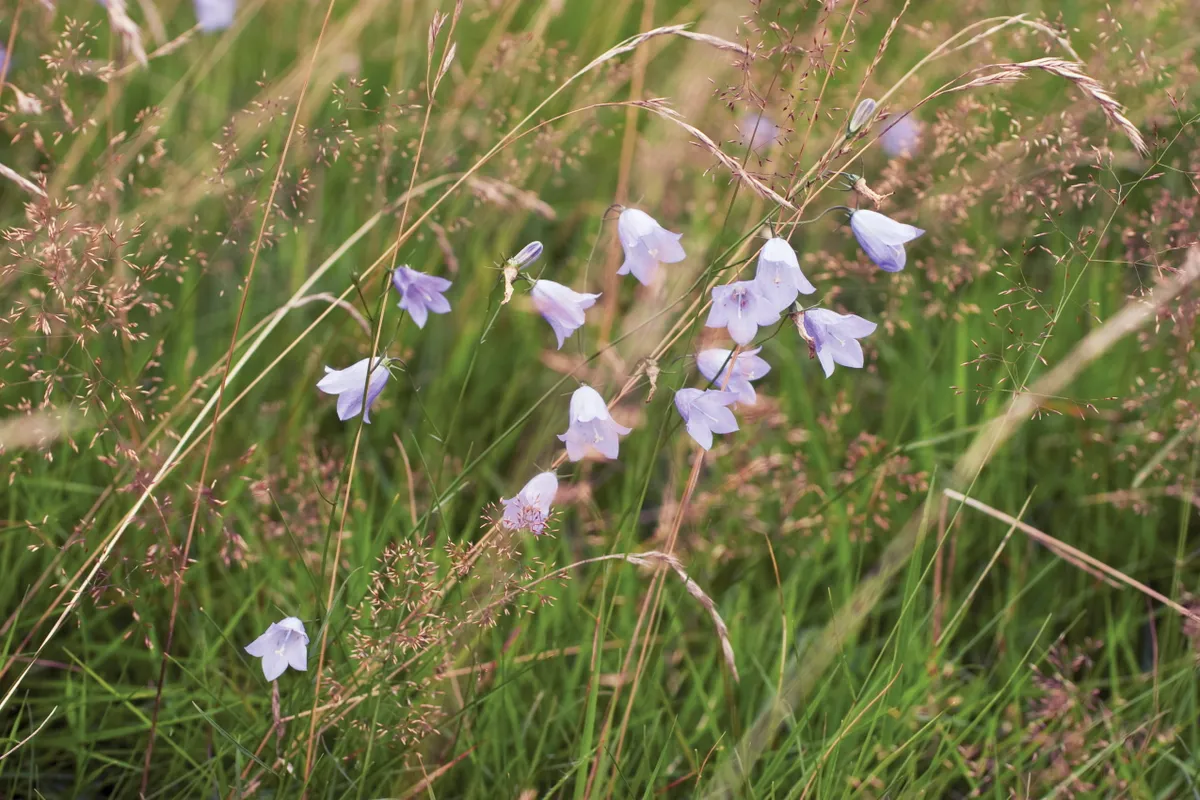
The genus name Hyancinthoides comes from Greek mythology. Prince Hyacinthus (sometimes Prince Hyacinth) was a Spartan prince and the lover of Apollo. He was accidentally killed when Apollo was teaching him to play quoit. As Apollo cried over the body of his dying lover, his tears (or the blood of Hyacinth himself) created the hyacinth flower, marked with ‘alas’ on its petals.
The two species can be told apart, however they can hybridise and the hybrid (Hyancinthoides x massartiana [hispanica x non-scripta]) can have features from both, making identification tricky. The hybrid is also known as the garden bluebell, and was first recorded in the wild in 1963.
Both the Spanish and the hybrid bluebell are more vigorous than the native species (meaning that they outcompete the common bluebell for resources such as light and space), and conservationists are worried that continued hybridisation may mean we lose the unique characteristics of the common bluebell. A study by Plantlife found that one in six broadleaved woodlands contained the hybrid and/or the Spanish bluebell.
Where are bluebells found?
Common bluebells can be found from northwest Spain and through to the Netherlands in continental Europe. It is thought that the British Isles may have half of the species' global population.
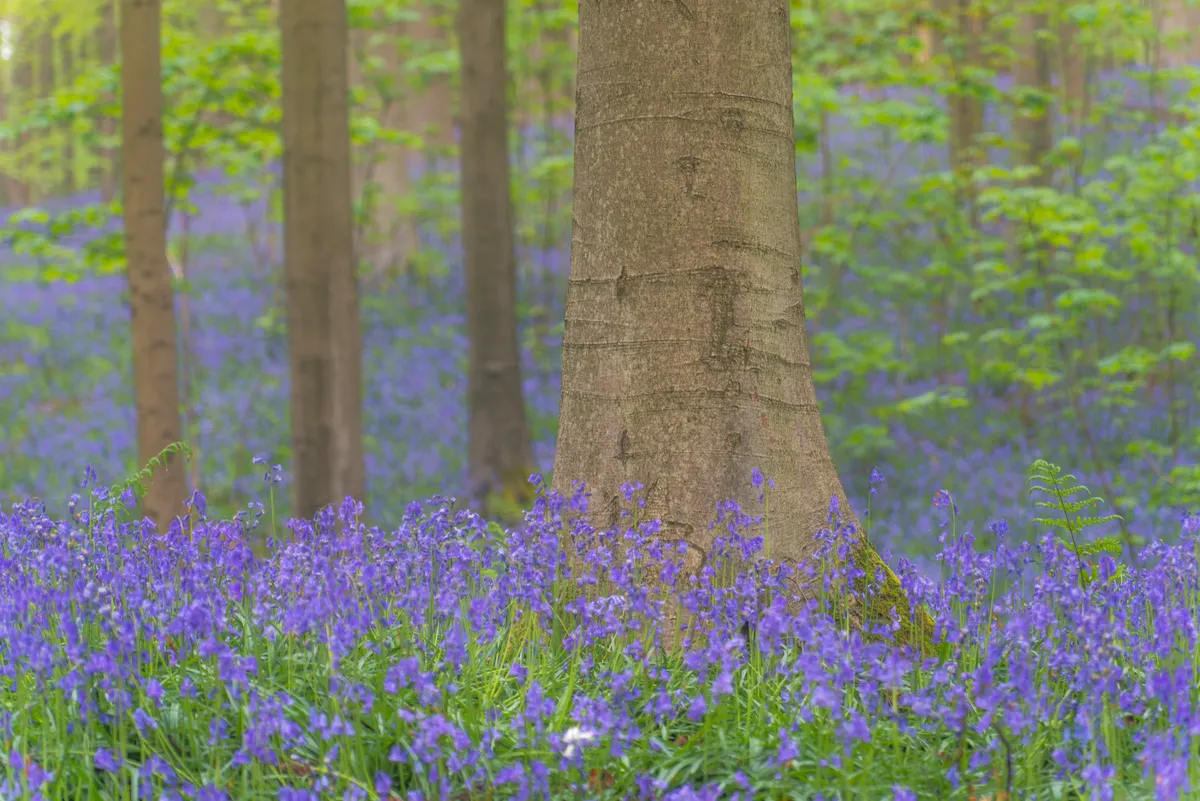
Common bluebells are typically associated with ancient deciduous woodlands (continuous tree cover since at least 1600 in England and Wales, 1750 in Scotland), and other ancient woodland indicator flowers include wood anemone, wood sorrel and ransoms. These are species that typically spread slowly, and usually require long-term and stable woodland cover to survive. Bluebells can spread via seed, but their bulbs can also split to form clones.
However, common bluebells can be found elsewhere if the soil is damp and rich – including hedges, open hillsides, sea cliffs, and even some islands, such as Skomer. They can be planted in gardens, if you are planning to do so, check that a) the bulbs you are being sold do actually belong to the common bluebell species and not the hybrid or Spanish species, and b) that the commercial grower has a licence to source and grow common bluebells from the UK.
Hybrid and Spanish bluebells can be found in gardens, woodlands, churchyards, and rough ground. If you are removing hybrid or Spanish bluebells from your garden or land (remember that it's only legal to dig up wild plants on your own land), it's best to dispose of cuttings and bulbs carefully. Composting bulbs before they are dead can lead them to propagate.
When do bluebells bloom?
The common bluebell flowers in April and May. By flowering early in spring, it is able to take advantage of the spring sunlight filtering down to the woodland floor, before the canopy above becomes too dense.
According to data from the Nature's Calendar survey, the first flowering of bluebells has advanced by at least 17 days since 2001.
How to tell the difference between common and Spanish bluebells
There are a number of key identification features to look out for when trying to identify bluebells: colour of the petals and of the pollen, shape of the inflorescence (the flowers and top of the stem), and of the flowers, and presence or absence of scent.
However, as mentioned in the introduction, it's worth remembering that the two species can hybridise and hybrids can have features from both species.
Identifying the common bluebell (Hyancinthoides non-scripta)
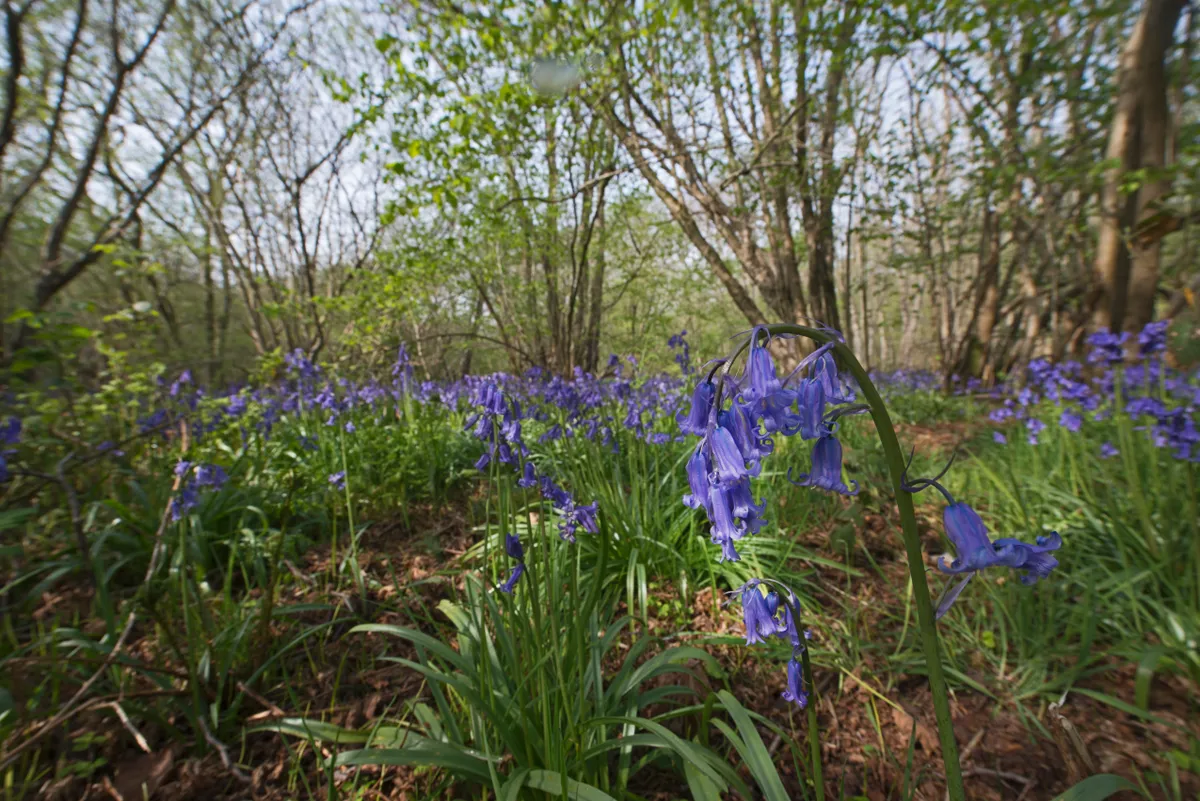
- Petal colour: deep violet-blue
- Pollen colour: cream
- Shape of inflorescence: flowers and stem droop or nod, with flowers all on one side
- Shape of flowers: flowers appear tubular, and the tips of the petals are reflexed (curved back)
- Scent: strong, sweet scent
Identifying the Spanish bluebell (Hyancinthoides hispanica)
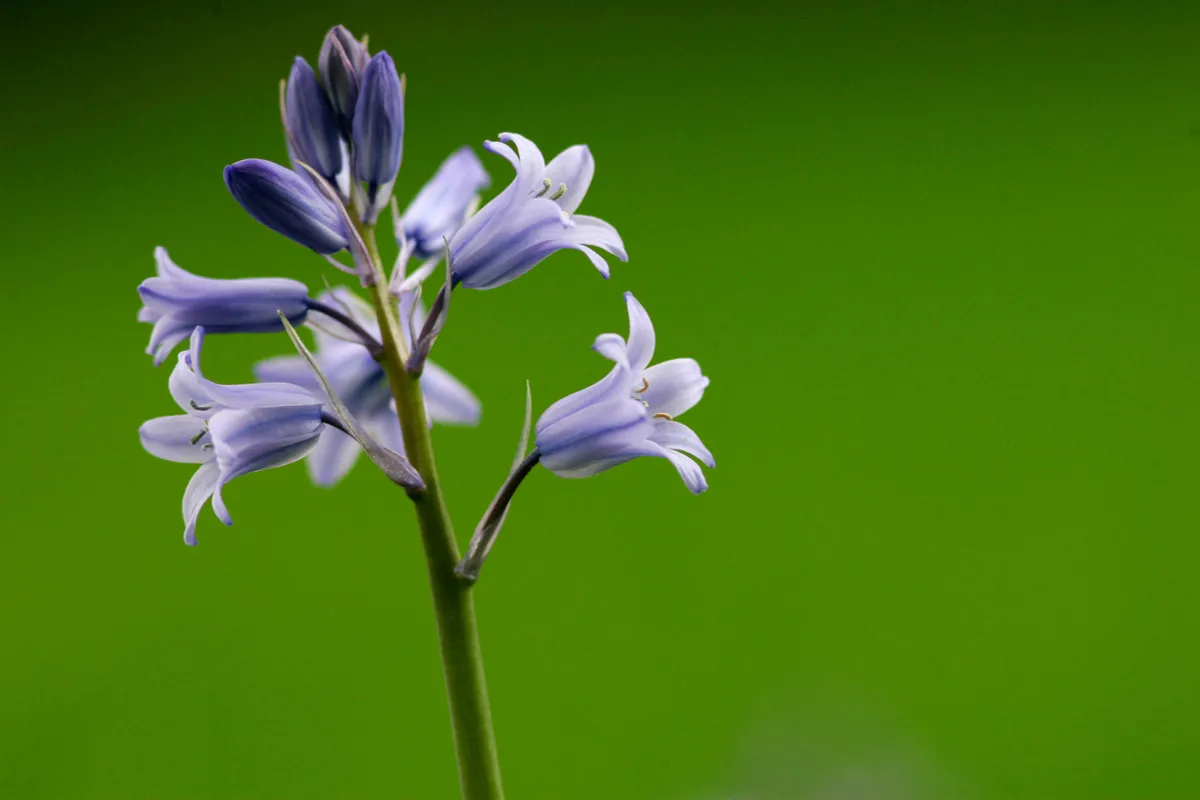
- Petal colour: varied colours including pale blue, white, and pink
- Pollen colour: blue or green
- Shape of inflorescence: erect, without drooping, with flowers not restricted to one side
- Shape of flowers: flowers are more saucer-shaped than tubular, and the tips of the petals are not so reflexed (curved back)
- Scent: very little or no scent
Does any wildlife feed on bluebells?
Bluebell flowers are attractive to pollinating insects, including butterflies and bees. The bulbs can be eaten by wild boar, which are omnivorous and are known to eat roughly 400 different species of plants and animals. There have been limited studies to the relationship between bluebells and the rooting of wild boar.
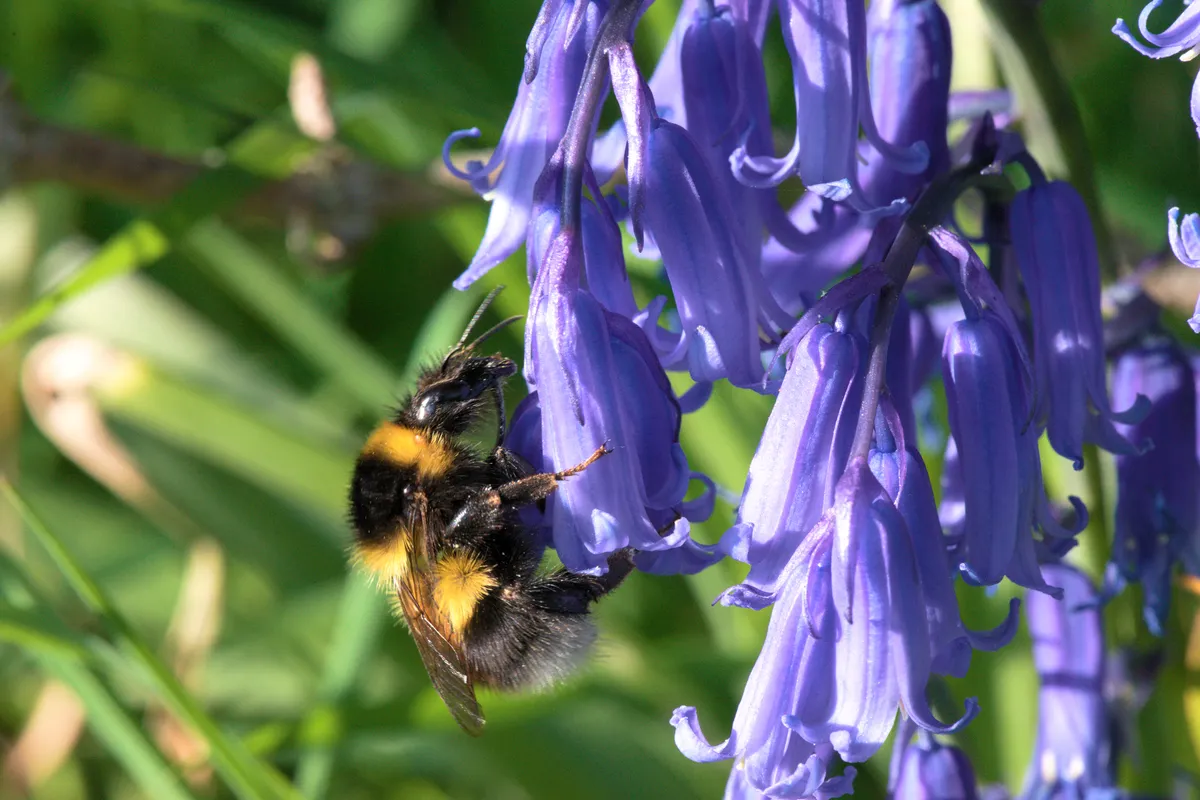
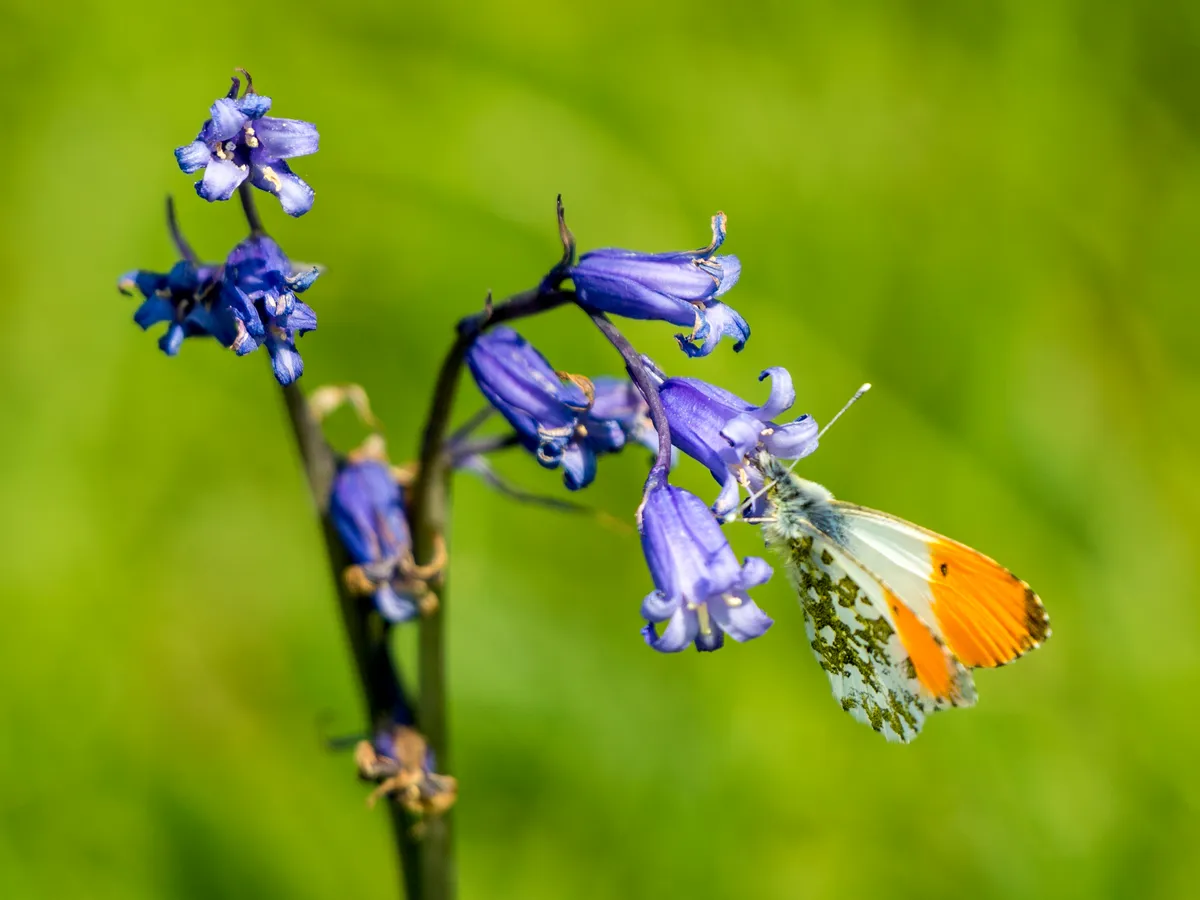
Where to see bluebells in the UK (suggested by conservation organisations)
Top Forestry England sites for bluebells:
West Woods, Lockeridge (Wiltshire)
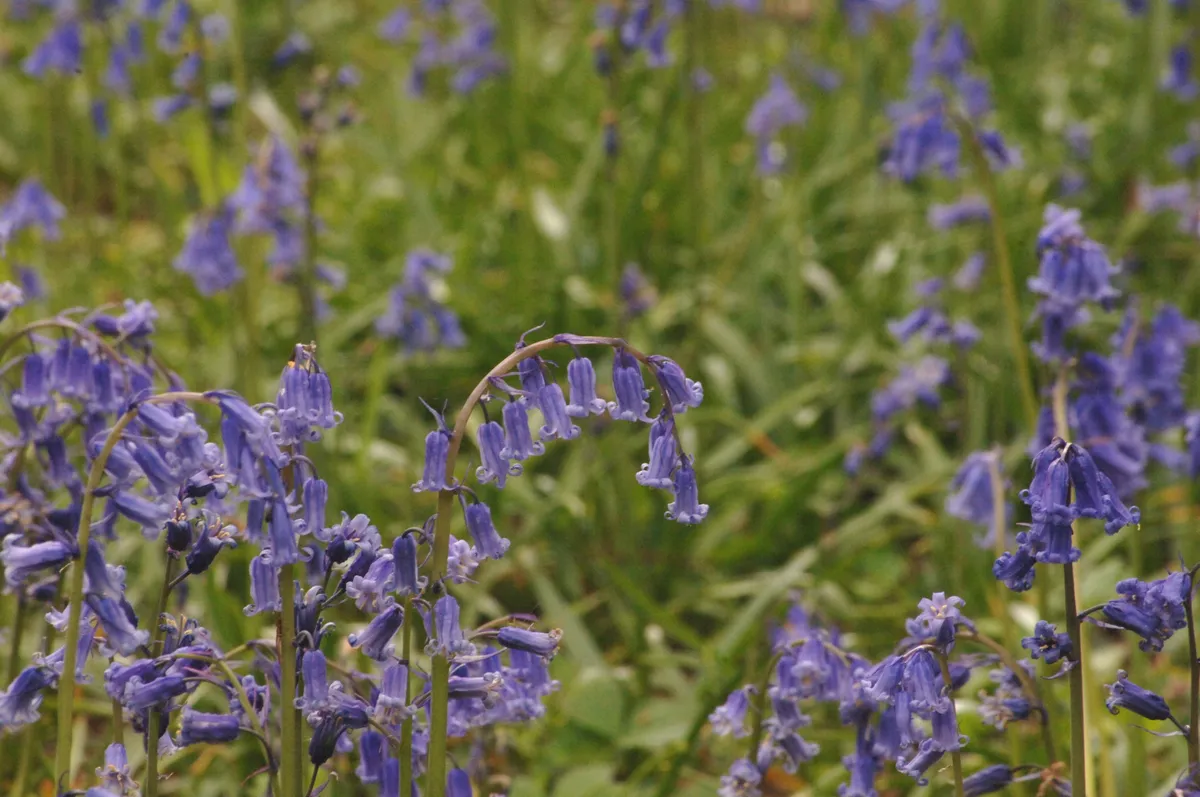
West Woods is one of the country’s finest locations for bluebells and, with over 500 hectares to explore, you’ll find peace and quiet in this magical corner of Wiltshire.
Westonbirt Arboretum (Gloucestershire)
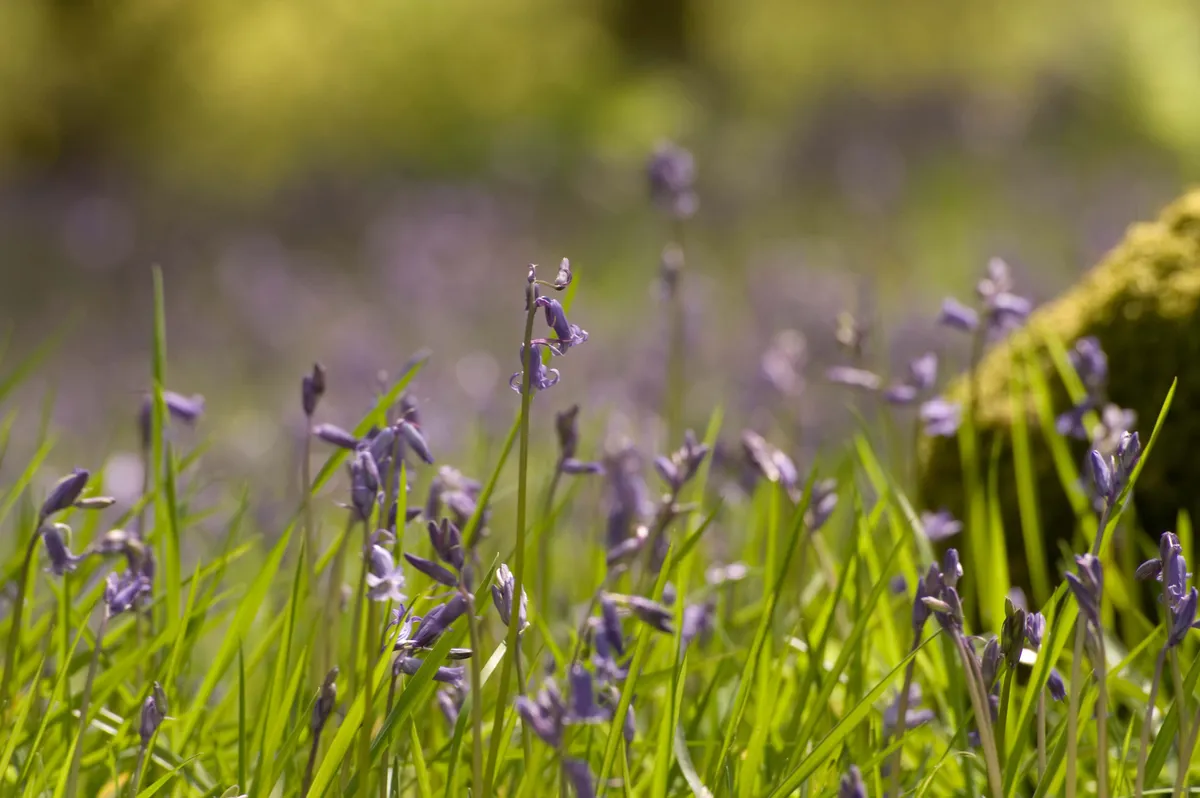
The national arboretum offers visitors a beautiful display of bluebells, which creates a spectacular vibrant display alongside other wildflowers and diverse tree species.
Grizedale Forest, Lake District
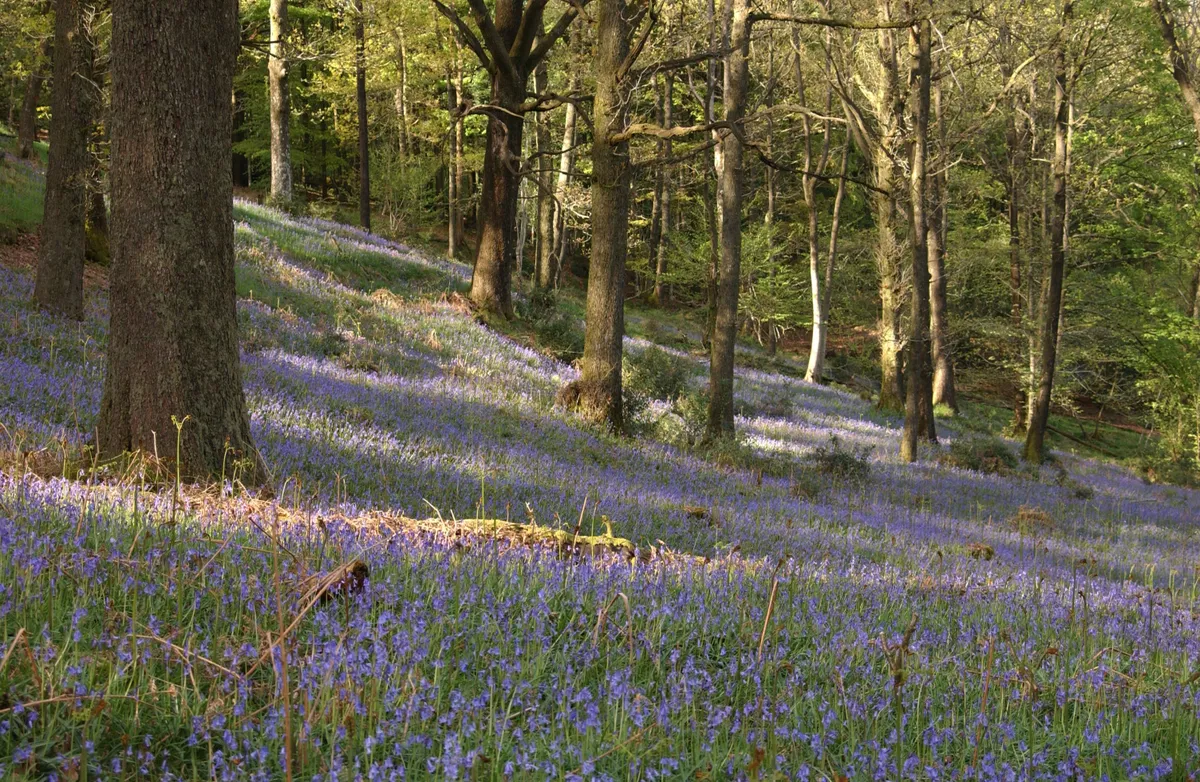
Parts of this idyllic woodland in the heart of the Lake District are transformed in the spring with a sea of bluebells covering the forest floor.
Top National Trust sites for bluebells:
Godolophin, Helston (Cornwall)
A 16th century garden famed for its sea of native bluebells in the woodland, where years of mining have left an unnatural, undulating landscape.
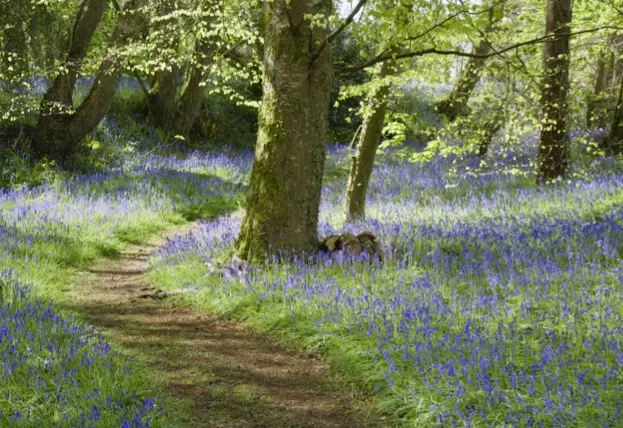
Bluebells at Godolphin © Andrew Butler/National Trust Images
Sheffield Park and Garden, Uckfield (East Sussex)
A newly opened part of the woodland area at Sheffield Park contains swathes of undisturbed and thriving bluebells. The River Ouse runs through the bottom of the parkland.
Calke Abbey, Ticknall (Derbyshire)
A short spring walk through the woodland shows off the best of Calke Abbey's bluebealls. The parkland is also home to Calke's deer herd consisting of around eighty fallow deer and thirty red, which give birth to their calves during May and June.
Top National Trust for Scotland sites for bluebells
Greenbank Garden, Clarkston (Glasgow)
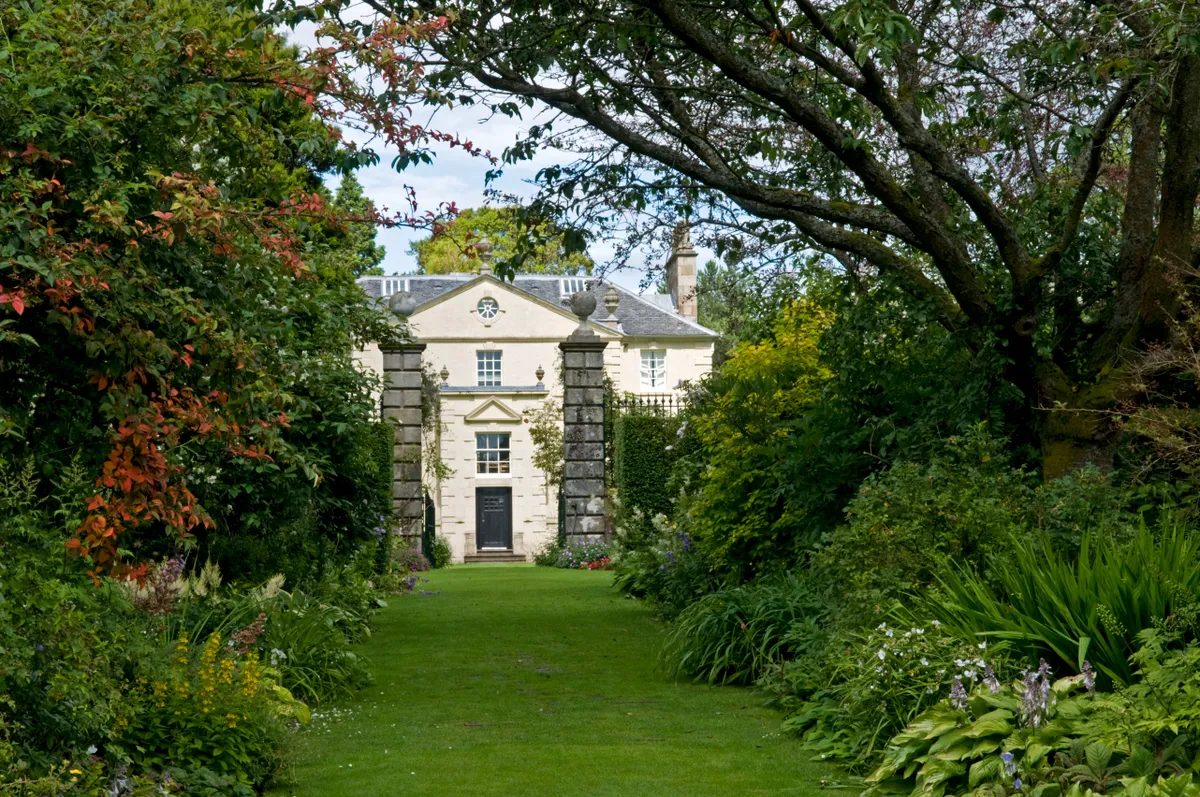
An urban oasis close to Glasgow’s Southside suburbs, with woodland walks and beautiful plants in all seasons – don’t miss the bluebells in spring!
Threave Garden and Estate, Castle Douglas (Dumfries & Galloway)
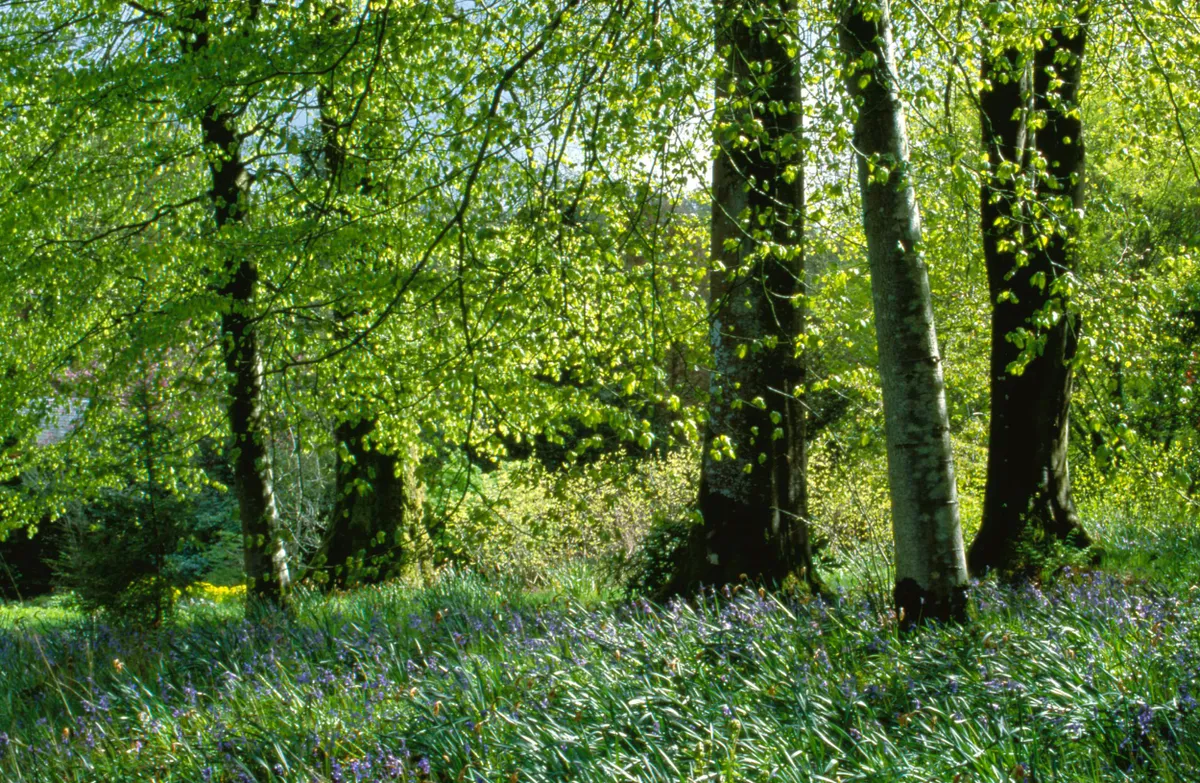
A garden for all seasons and a haven for wildlife. The garden is divided into a series of smaller gardens to showcase different styles, including a rose garden, rockery and walled garden.
Culzean Castle and Country Park, near Maybole (Ayshire)
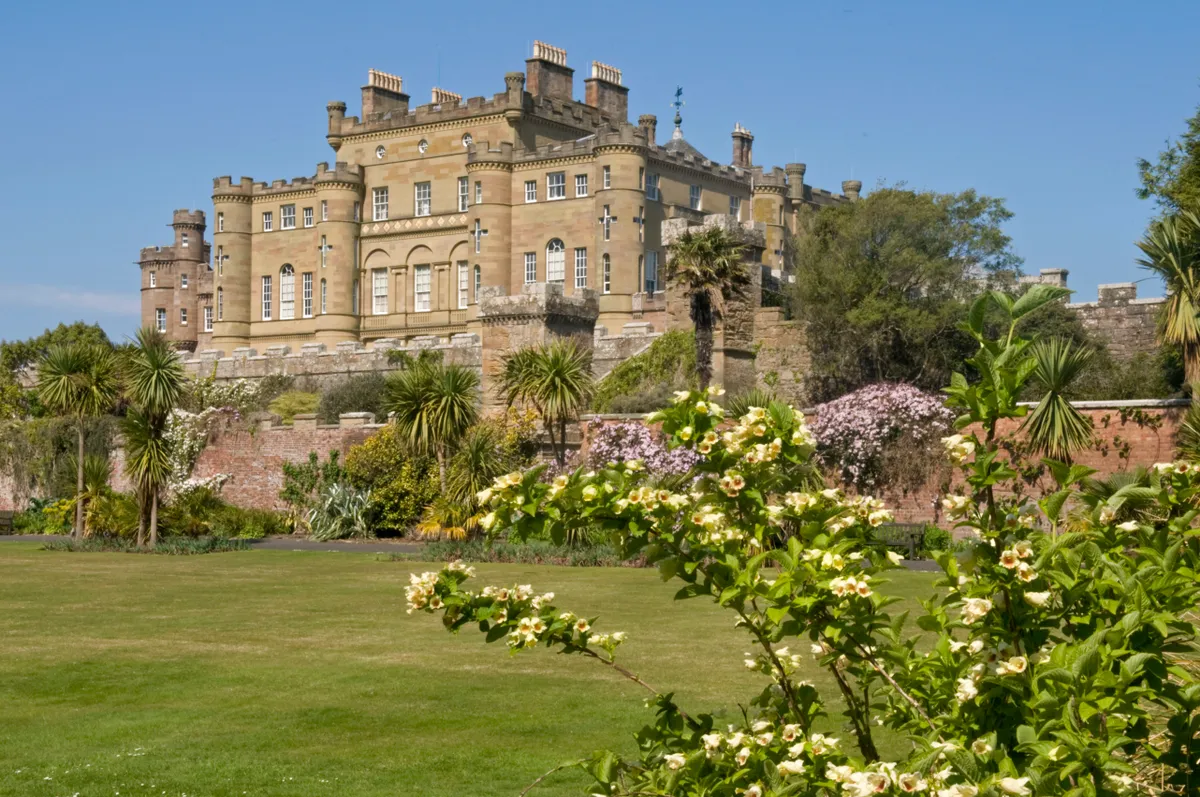
Robert Adam’s cliff-top masterpiece rises above a world of, beaches, secret follies and woodland - the floors of which are covered in a sea of blue in spring.
Top RSPB sites for bluebells
The Lodge, Sandy (Bedfordshire)
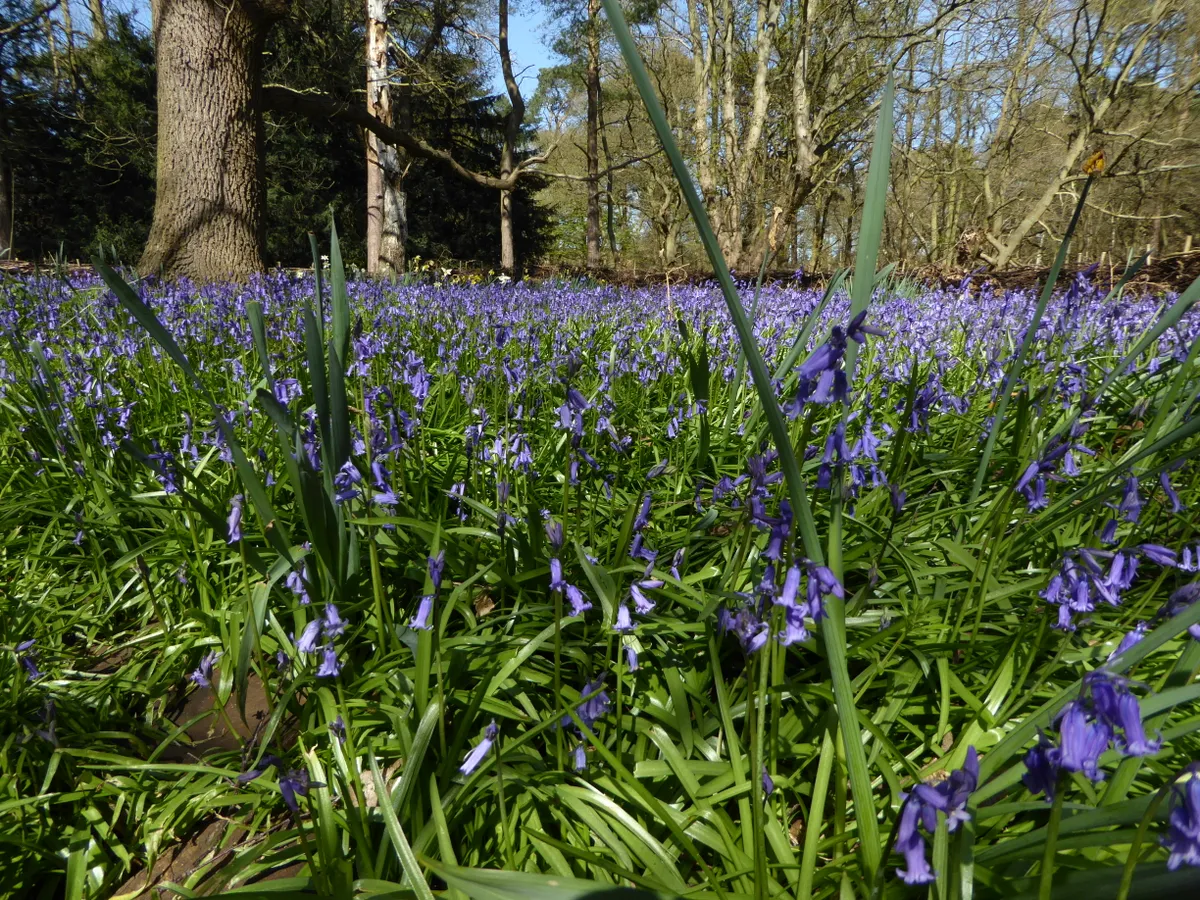
The headquarters of the RSPB includes woodland, heathland, formal gardens and Iron Age archaeology. There is a wide variety of wildlife to look out for alongside bluebells, including breeding hobby from late April, natterjacks will start croaking in the evenings, and green tiger beetles on the heathland areas.
The Wood of Cree, near Newton Stewart (Dumfries and Galloway)
A fabulous display of bluebells and other woodland flowers during spring. Other star species include red squirrel, pied flycatcher, redstart and even a rare species of bat, Leisler's bat.
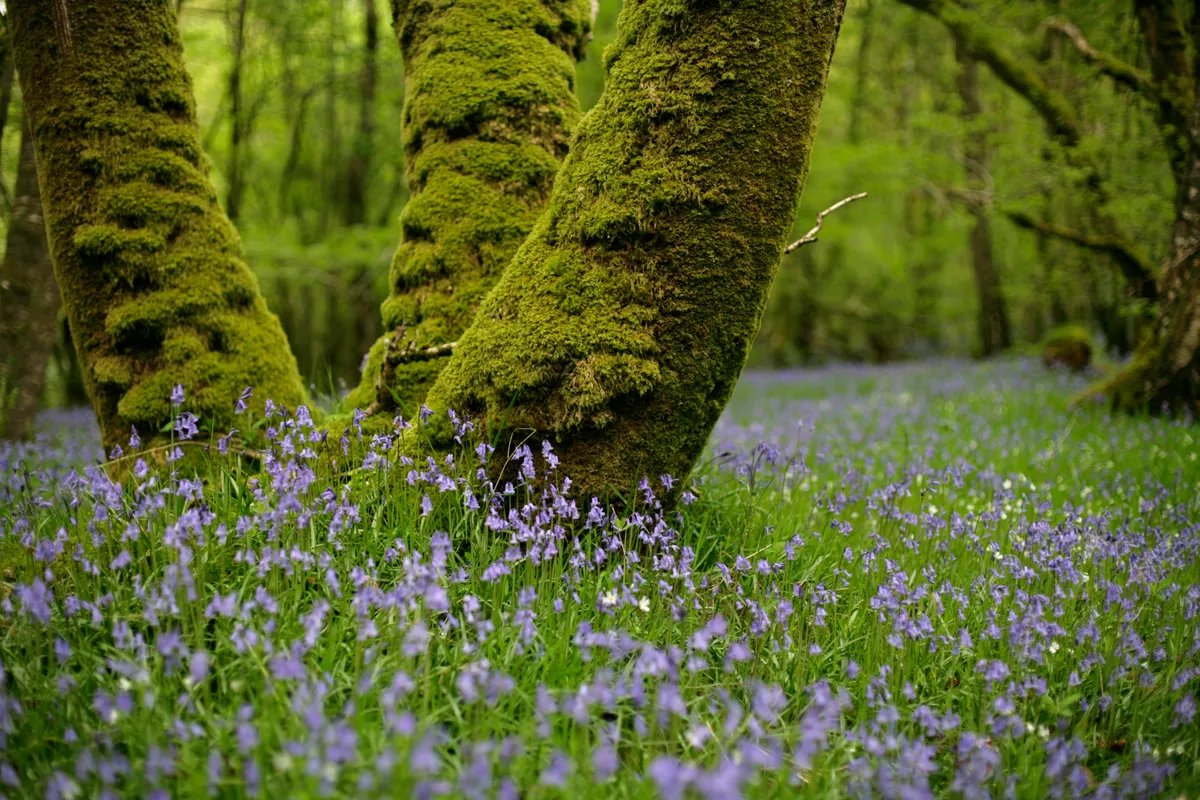
Northward Hill, Cooling (Kent)
This reserve has carpets of bluebells from mid April, whilst whitethroats and nightingales sing from the undergrowth. There are nesting grey herons, little egrets and avocets.
Top Wildlife Trusts sites for bluebells
Launde Woods, (Leicestershire)

The ground flora of this woodland is very rich and includes wood anemone, bluebell, wood-forget-me-not and a variety of orchids such as early-purple, bird’s-nest and greater butterfly.
Pound Wood, Benfleet (Essex)
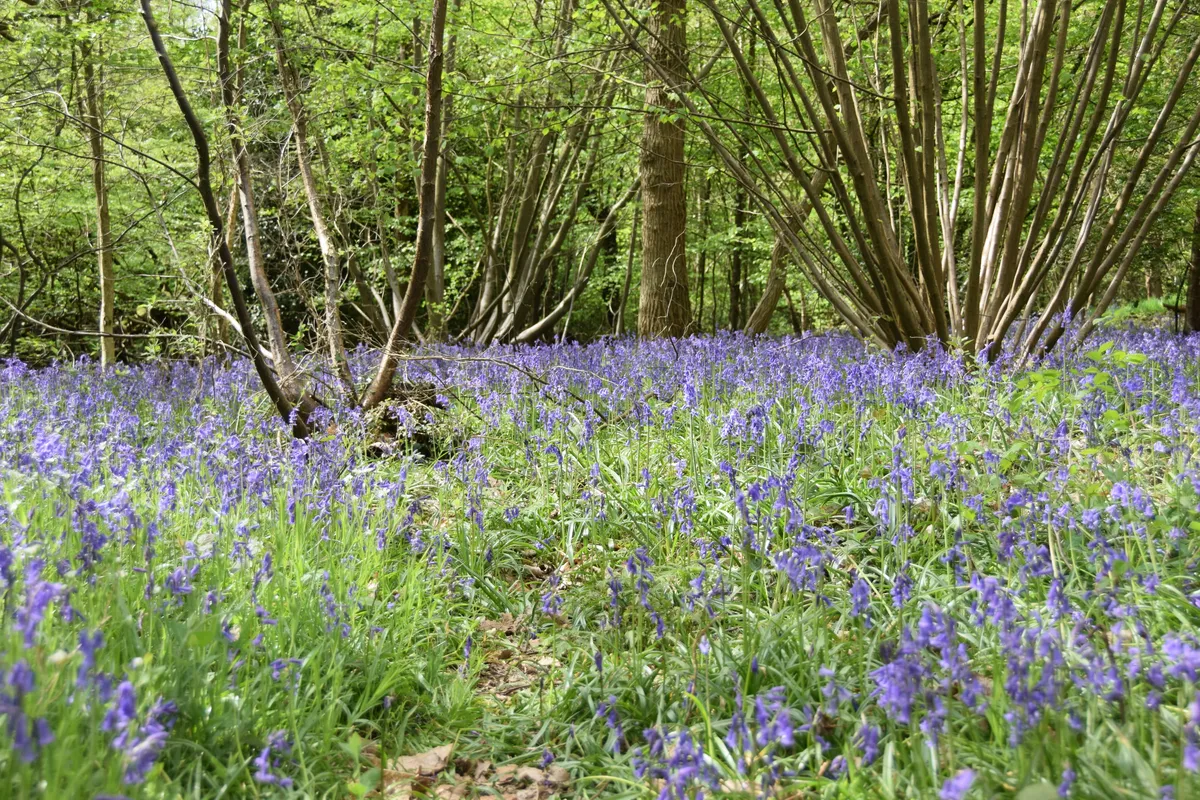
In the spring there is a fantastic display of bluebells and visitors can also see common cow-wheat, yellow archangel and wood spurge. Coppicing has opened up wide areas of space where the rare heath fritillary butterfly flourishes.
Siccaridge Woods, Frome Valley (Gloucestershire)
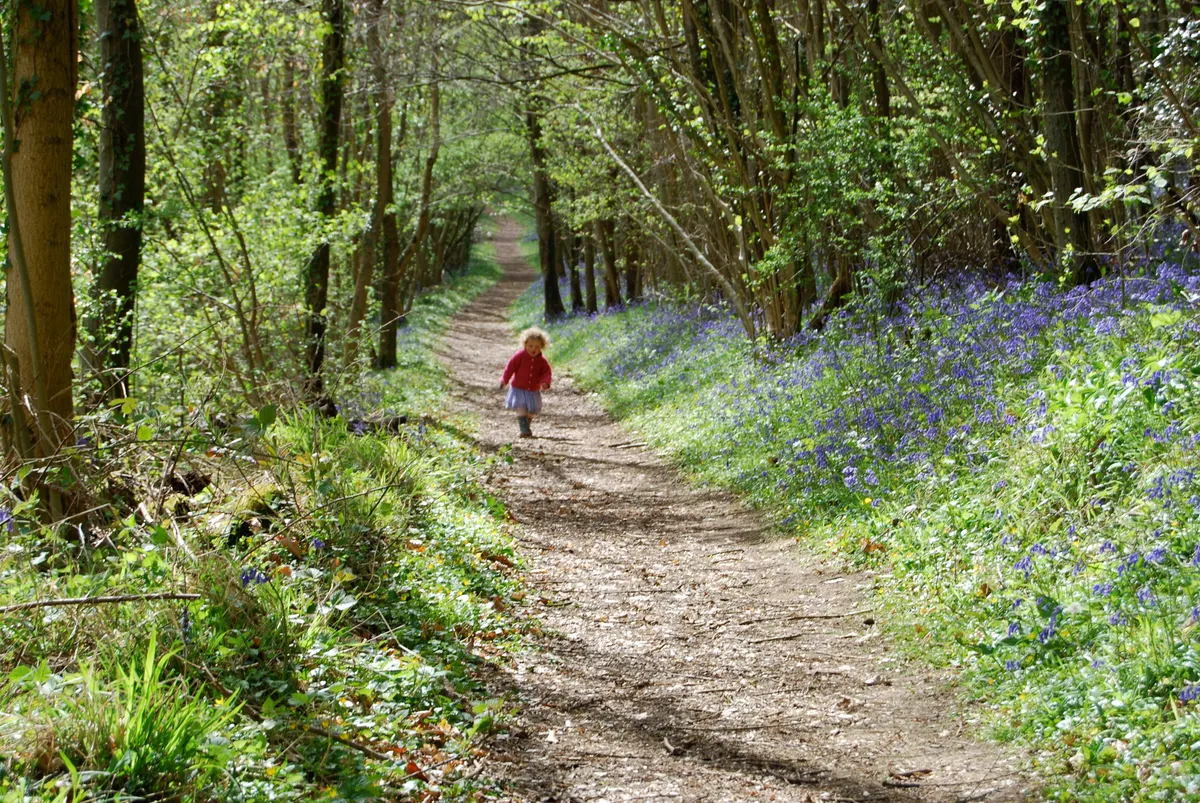
An ancient coppiced woodland that boasts carpets of bluebells in spring, and there is a glade noted for its lily-of-the-valley. Other uncommon species found here include herb Paris and bird’s nest orchid.
Top Woodland Trust sites for bluebells
Coed Cefn, Crickhowell (Wales)
Alongside a canopy of oack and beech, this ancient woodland site includes an Iron Age hilltop fort to incorporate a historical angle to your woodland enjoyment.
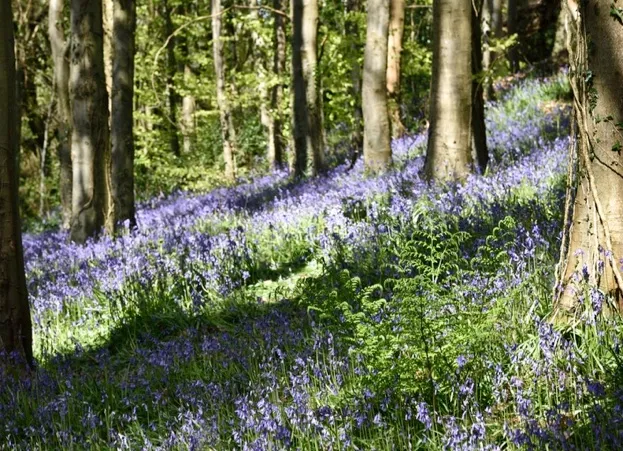
Bluebells in Coed Cefn © Woodland Trust
Nidd Gorge, Harrogate (Yorkshire)
Clinging to the sides of a dramatic ravine, Nidd Gorge woodland has a patchwork of habitats supporting a range of wildlife. There is also an adventure trail to keep kids occupied for hours too.
Urquhart Bay, Drumnadrochit (Scotland)
On the banks of the Loch Ness, Urquhart Bay is one of the best examples of surviving ancient wet woodland in Europe. Footpaths form a figure of eight through the centre of the wood.
Where to see bluebells: suggestions from BBC Wildlife readers
- Ashridge - suggested by Joyce Dela Paz
- Bradbury Hill - suggested by Roger Parker
- Darroch Wood - suggested by Kate Fleming
- Inversnaid - suggested by John Tweedie
- Kings Wood (Bawtry) - suggested by Sarah Blake
- The Leasowes - suggested by Jo Isaac T
- Malvern Hills - suggested by Emily Vern
- Moor Copse - suggested by Mike Kirby
- Morvern - suggested by Ernie Scales
- Slindon Woods - suggested by Katie White
- Sulham Woods - suggested by Michael Scott
- Walsingham Abbey - suggested by Caro McAdam
- Weston Prink (Coyney Woods) - suggested by Colin Osborne
- West Woods - suggested by Stacey Woolhouse
- Ynys-hir - suggested by Dave J Dickenson
Main image: Sunrise over bluebells in Warwickshire. © Ben Waters/Getty
